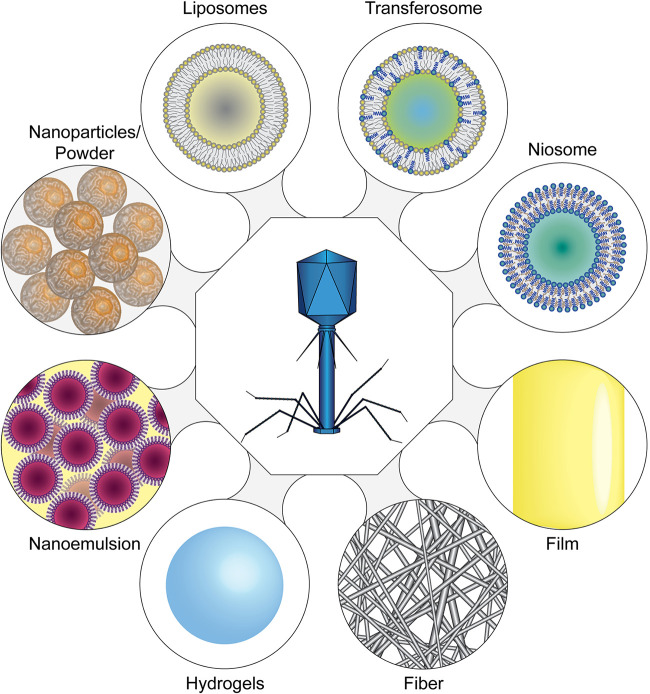FIG 3.
Phage encapsulation methods. (Clockwise from top) Liposomes, transferosomes, and niosomes represent small, aqueous “nanocontainers” that are separated from the outside by a barrier composed of amphiphilic molecules, which can be lipids (liposomes), lipid-detergent mixtures (transferosomes), or amphiphilic nonionic compounds together with cholesterol (niosomes). In contrast, films create a matrix in which bacteriophages are incorporated. Similarly, (nano-) fibers create a network of molecules that entrap the phages within yet still allow diffusion of the particles if fiber sizes permit. Hydrogels can create particles that allow the embedding of bacteriophages throughout the particle or larger objects such as films. Similar to films and fibers, phage particles are entrapped throughout the hydrogel network. Nanoemulsions are water droplets—which contain the phage—in an oil matrix with an emulsifying agent that prevents phase separation. Nanoparticles or larger powders may either contain phages within the compound that forms the particle matrix or present a surface to which the phages bind.

